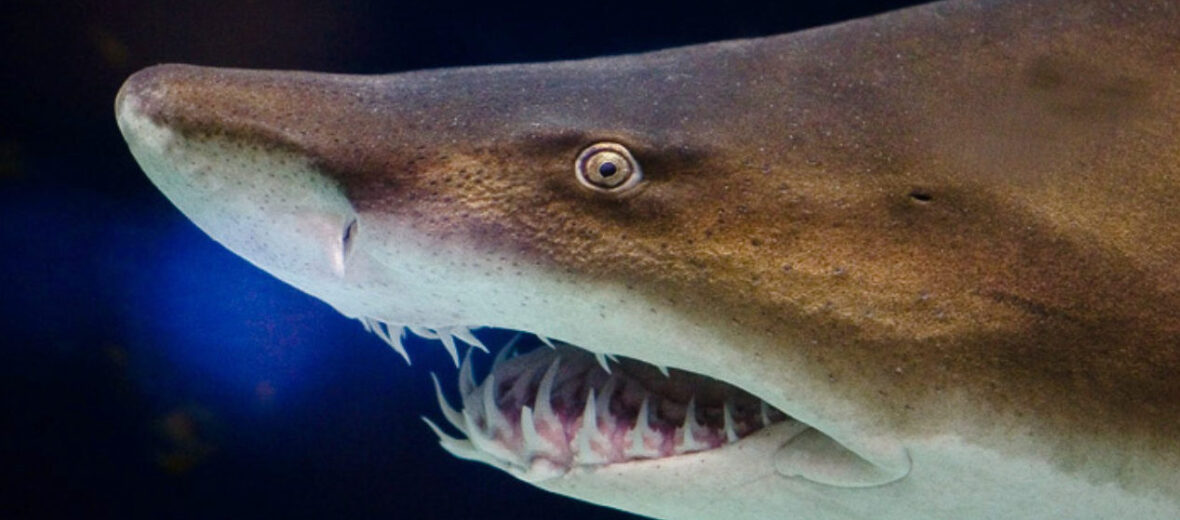
The sand tiger shark, aka grey nurse shark, spotted ragged-tooth shark, or blue-nurse sand tiger – among other names, can be found worldwide; including off the coast of Australia. These sharks are slow-moving ocean-dwellers and are predominantly harmless to humans. Being primarily nocturnal (active at night) they tend to take it easy during the day, resting and awaiting the darkness to hunt. They tend to mostly ignore humans.
First the Stats…
Scientific name: Carcharias taurus
Weight: Up to 400+ lbs.
Length: Up to 9+ feet
Lifespan: Up to 40 years
Now on to the Facts!
1.) They have outward-pointing teeth that have smooth edges and have evolved to grab onto slippery prey.
2.) Sand tigers usually shy away from contact with people, however they have been known to steal fish from spear fisherman and net fishers.
3.) Even though they appear to be docile, by nature, they are sharks. They can and will deliver a very painful and damaging bite if threatened.
4.) The sand tiger isn’t related to the tiger shark, but rather the great white shark.
5.) They are, like many sharks, endangered. They are over-hunted in some parts of the world for their skin, meat, teeth, oil, and fins.
But wait, there’s more on the sand tiger shark!
6.) Due to overfishing, bycatch, and pollution, their numbers dropped 70% – 90% by the end of the 20th century!
7.) Male sharks have 2 fins, called claspers. They use these to deliver sperm into a female shark’s 2 uteri, both are able to host 5 – 7 embryos.
Did you know…?
Female sand tigers tend to mate with several partners each season, and it has been thought that the eggs from the first male will be the first to fertilize and develop.
8.) Not all of the embryos will reach maturity.
9.) About 5 months into a roughly year-long gestation, a few of the eggs will begin to hatch and the hatchlings will swim around the uterus. Being hungry and trying to survive, the largest fetuses eat the remaining unhatched eggs and smaller siblings who have already hatched.
10.) When mom finally gives birth, only 2 shark pups remain; 1 for each uterus.
Now a Short Sand Tiger Video!
Also, check out the Critter Science YouTube channel. Videos added frequently!
Want to suggest a critter for me to write about? Let me know here.



